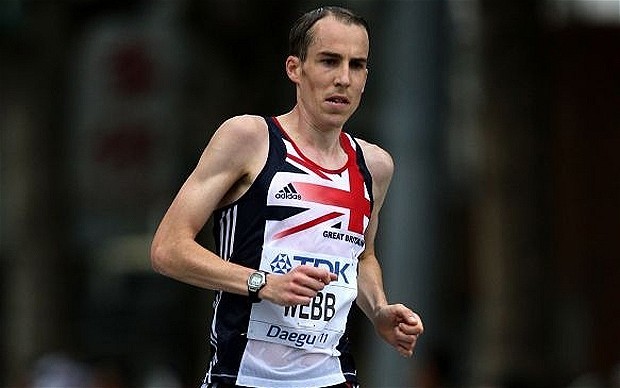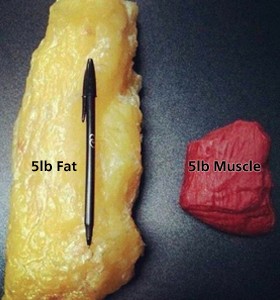Q: I have almost always done exclusively cardio.
I seem to only notice marginal improvements in endurance, but still experience shortness of breath, light-headedness, etc. I also retain a lot of my body fat.
Some people suggested I try lifting. Do you have any thoughts on this?
Absolutely! This is one of my favorite questions, and as a trainer it comes up fairly frequently. The amount misconceptions regarding cardio, endurance, and body fat reduction have spread far and wide. Let me attempt to clear the air on some of this.
First, before I get into any of the details on how this works and what to do, we have to establish what “cardio” means. Technically anything can be considered cardio, because there is no activity (that I know of) that does not involve your cardiovascular system. Running, lifting, sleeping, eating, watching re-runs of Breaking Bad, playing Candy Crush Saga, all still require your heart and lungs to function. However, when someone refers to “cardio”, they typically are talking about long (20-60 minutes), slow or moderately paced exercise. Usually this is running, swimming, biking, or some other mind-numbing activity. So at any point in this article, the word “cardio” will refer to that.
I know I sound like a smart alec, but we have to establish clear guidelines before we start breaking down how this works.
Now on to the meat and potatoes.
The two concerns here are physical endurance, and body fat. An extremely common mistake made by martial artists is to think that raising their endurance level means doing lots of running. The reason this misconception exists is most likely because the first thing a person notices when they start training Muay Thai or Jiu Jitsu is that their heartbeat is so strong and fast they can feel it in their teeth. Another reason is that this is often a prevailing theme in movies (cue Survivor’s “Eye of the Tiger”). Steady state cardio has its place in strength and conditioning, but it cannot be the foundation if your goal is to be a beast on the mats or in the ring.
Contrary to popular belief, heavy lifting is one of the best ways to increase your endurance in martial arts. A while ago I heard a really good breakdown of why this is. Say we are in a match against each other. We start the match both feeling calm and strong, but your 70% strength is the same as my 100% strength. Who is going to take longer to gas out? You of course! You will produce the same amount of output as me with 70% of the effort. Now doesn’t that sound nice? The reason is the different energy systems that are at play during a match or fight (something we’ll discuss in a future article).
On top of that, lifting is also great for reducing body fat percentage. When you lift weights you in turn raise your resting metabolic rate. What does this mean? It means that you are burning more calories all the time. With cardio, you burn a decent amount of calories, hop off the bike, and thats the end of the story. Weight lifting keeps you burning more calories hours after your done. Not only that, but the increase in muscle mass is going to raise your metabolism even higher.
If you don’t believe me, here is an easy test to see why steady state cardio may not be the best. Go to Google and in “Images” search “Marathon runners”. Now look at the pictures you see. They are probably very skinny, with little muscle tone, and may even look emaciated.
Is this your goal? I would guess probably not. Now clear your search bar and type in “Olympic Sprinter”. What do you see? These people look muscular, but not bulky, they just look athletic.
The reason for this is that long, slow cardio can become catabolic. This means that because the body does not maintain enough glycogen (energy from carbs) to produce energy for such a long amount of exercise, the body is forced to start to break down muscle protein for energy. And as we talked about earlier, muscle mass = high metabolism, so we want to preserve it.
The main issue people typically have with heavy lifting is that the increase in muscle can keep the number on the scale from changing as quickly as they want it to. Muscle is much more dense than fat, and can offset the scale even though you are looking more athletic.
This is why it is important to keep track of things like your actual body fat percentage, how your clothes fit, how you look (yes, be vain, what good is all this work if you don’t enjoy the fruits of your labor?), and these types of things. Remember that your goal is body composition (fat to muscle ratio), don’t worry about the scale so much.
The other issue some have with heavy lifting is that they are afraid of getting “too bulky”. Believe it or not, the lifting programs that get you strong, and the lifting programs that get you big (Arnold style), are night and day from each other. A bodybuilding program focuses on what is called Sarcoplasmic Hypertrophy. That is just a fancy word meaning it expands the sarcoplasm (essentially the liquid that separates the muscle fibers).
This is done through high volume training, generally with light weight and high reps. Bodybuilders are not very strong, relatively speaking. Getting strong mostly requires high weight, and low reps. This type of training will not get you big, but it will get you strong, toned, and feeling like a beast in training and competition.
The moral of the story is that cardio alone will not get you significant endurance on the mats, and it will not get you serious reductions in body fat percentage. Does that mean you should throw your running shoes in the dumpster and burn your elliptical to the ground? No. Some people really enjoy running (not me) and want to keep some in their program. That is fine, but if you want to look ripped to the gills and up your physical prowess on the mats, adding in some strength training is a must.
See you on the mats!
Coach Connelly
Blue Belt in Brazilian Jiu-Jitsu
A.C.E. Certified Personal Trainer



